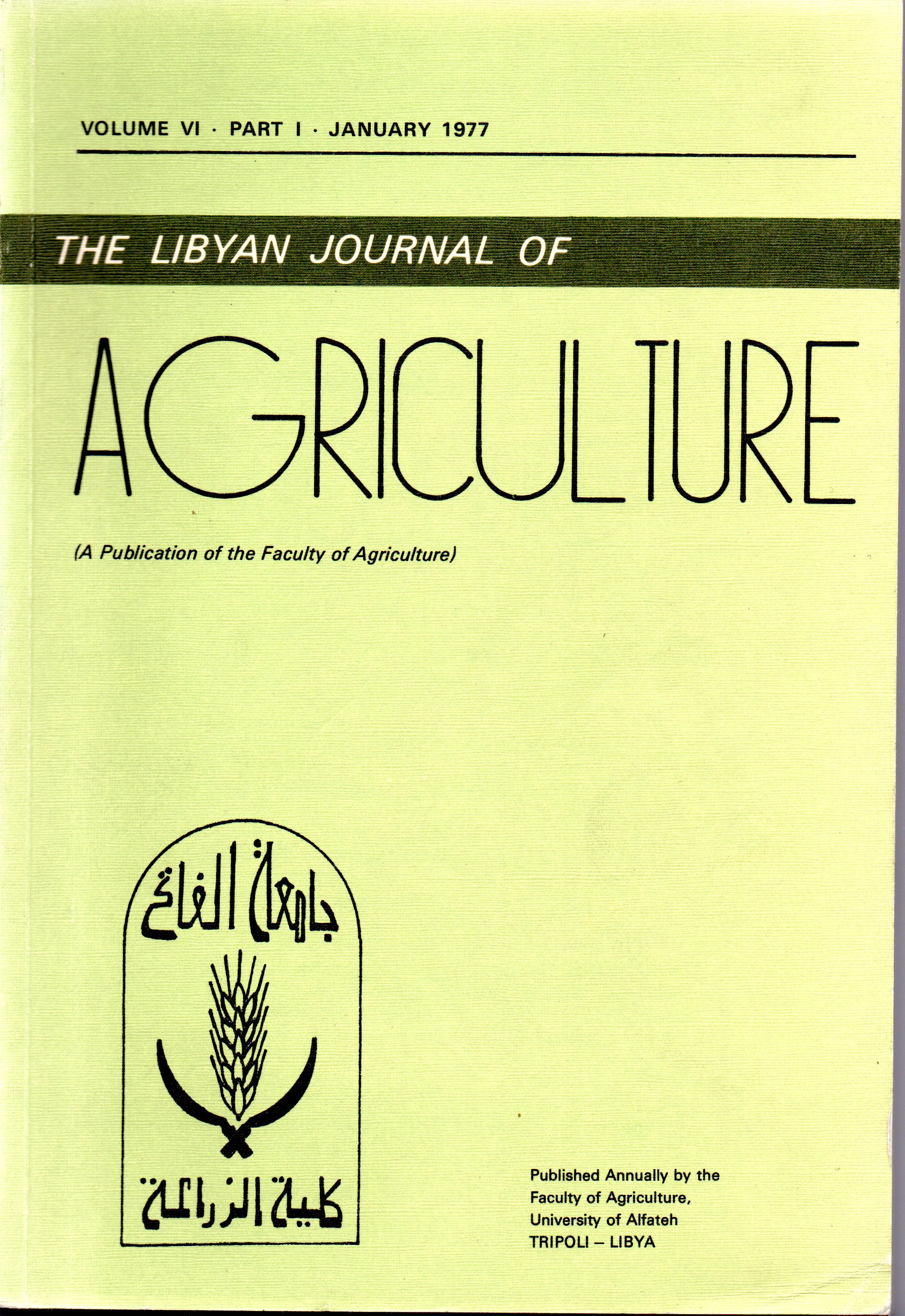The Influence of Herbicides on Major Field Crops in the Newly Reclaimed Areas of Egypt. II. Effect of Postemergence Application of Herbicides on Wheat, Cotton, Maize, and Rice Seedlings.
Main Article Content
Abstract
The effect of seven herbicides, applied as postemergence treatments, was evaluated in pots on the seedlings of wheat, cotton, maize, and rice at the Faculty of Agriculture Experimental Farm, Alexandria, in 1971. The herbicides were Atrazine, Linuron, 2,4-D. Trifluralin, Fluometuron, Molinate, and Propanil. Five concentrations of each herbicide were applied. A numerical grade scale (from zero to ten) was used in evaluating the various effects on crop seedlings.
Maize seedlings did not resist the postemergence application of Trifluralin, Fluometuron, Molinate, Propanil, and Linuron at all concentrations, except the lowest rate (0.5 kg/f; f = faddan = 4,200 m2) of Linuron and Fluometuron. The seedlings resisted 2,4-D and Atrazine at the low rate but died after fifteen days when higher rates were used.
Wheat seedlings failed to resist all concentrations of Trifluralin, Propanil, Molinate, Fluometuron, Linuron, and Atrazine (except the lowest rate of0.5 kg/f.). The seedlings differed in the degree of resistance to 2,4-D: i.e., they were completely resistant at the rates of 0.5, 1.0, and 2.0 1/f, but were completely killed after fifteen days at the rate of 4.0 1/f.
Propanil, Molinate, 2,4-D, Trifluralin, and Linuron had no effect on rice seedlings at all concentrations except the high ones (12.0 1/f, 7.5 1/f, 4.0 1/f, and 4.0 kg/f, respectively). However, rice seedlings did not resist all concentrations of Atrazine and Fluometuron, applied postemergence, except at the lowest rate.
• Cotton seedlings were injured by Propanil. Molinate, 2,4-D, and Atrazine at all con-
centrations. On the other hand, they resisted Trifluralin (at the rates of 0.5 and 1.0 1/f) and Fluometuron (at the rates of 0.5 and 1.0 kg/f.) but were severely injured by the „ higher rates. The rates higher than 0.5 kg/f of Linuron injured cotton seedlings.

